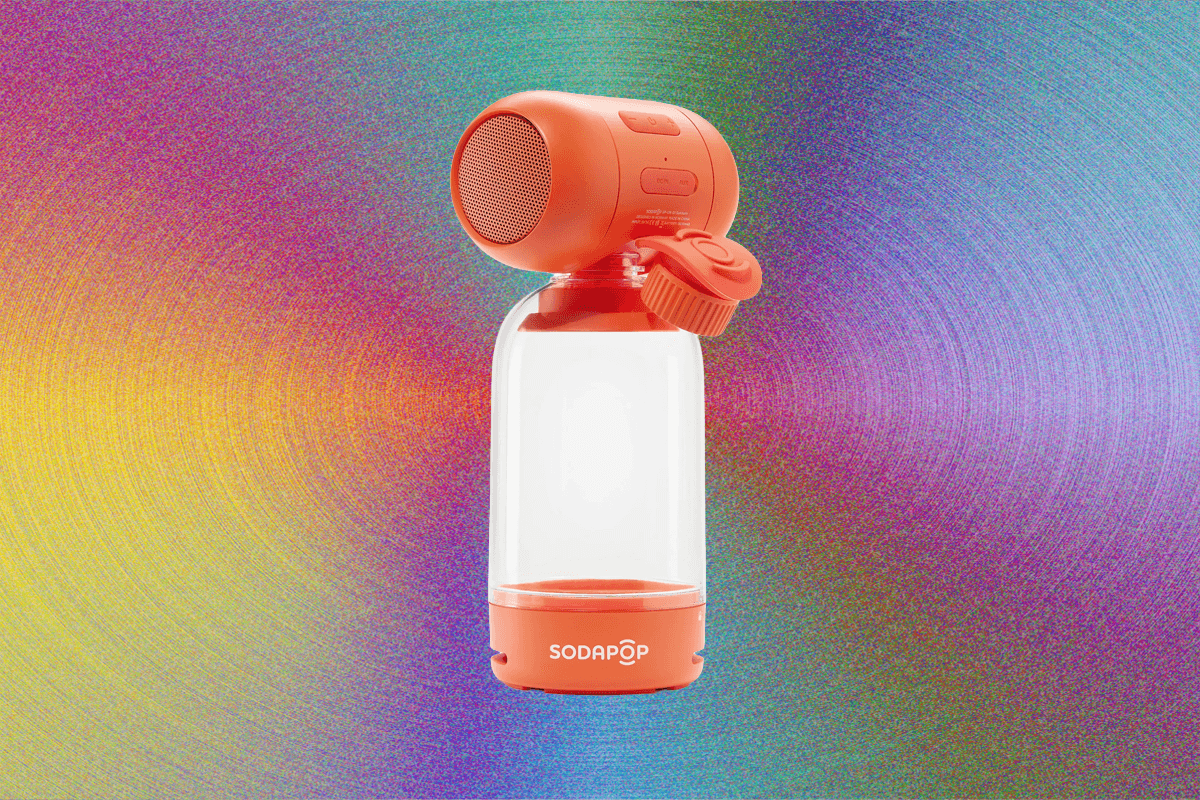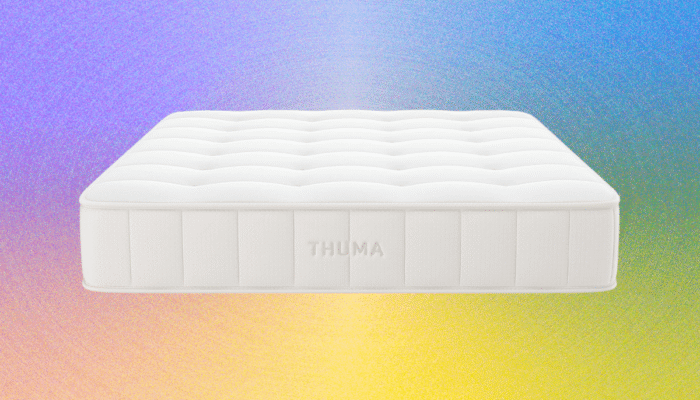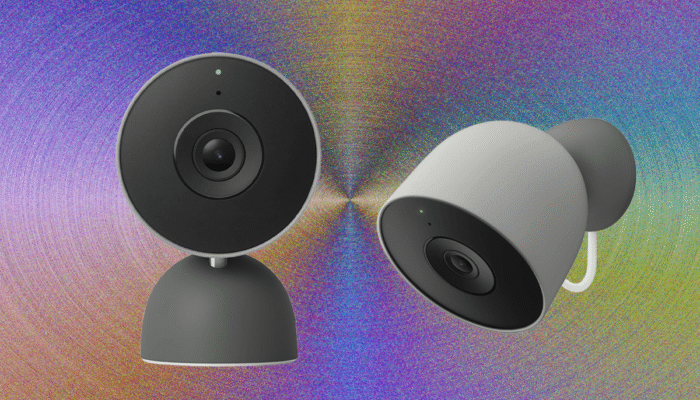Brands spent an incredible $247 billion on social media ads in 2024. Get it right and it’s a phenomenally good platform for targeted selling. It has rocketed countless tiny brands to viral fame, and made their fresh-faced founders unimaginably rich.
It can also be a wonderful space to find new and exciting products, and the Slack channels at WIRED are continually pinging with links to interesting ideas and cool concepts. Responses range from “Love this!” and “If this exists, we have to test” to “Call this in now!” and “Stand down, it’s just AI.” Then, a few months ago, a link to the Sodapop Bluetooth speaker was shared, with the question, “Does this really work?”
Sodapop is a one-of-a-kind super compact Bluetooth speaker that can be screwed onto a standard soda bottle if you want to boost the bass. Your empty bottle of Mountain Dew is transformed into a bass chamber that, according to the manufacturer, will boost the speaker’s bass output by up to 10 decibels. This doesn’t sound like much, but again, according to the brand, this configuration will double the perceived volume in the mid-bass range.

Photograph: Chris Haslam
It’s a neat idea, especially as the very smallest portable bluetooth speakers are notoriously thin in the bottom end. They can’t help this; there’s simply not the power in the driver, or breathing space in the casing, to produce those rumbling lows. That’s not to say there aren’t some fantastic small portable speakers out there, but in reality, the very best options tend to be the biggest.
So does the Sodapop work? On its own, the cylindrical speaker is just 3.8 inches long, 2.3 inches deep, and weighs 10.5 ounces. It’s tiny. There are two 4.5-watt stereo drivers, a 10-watt amplifier, and Bluetooth 5.0, plus a 3.5-mm AUX and a built-in mic for calls. It’s powered by a 1,600-mAh rechargeable battery, which should be good for up to 30 hours of playback.
The speaker also comes with, and is hidden snugly inside, its own plastic bottle. That’s right folks, the speaker designed to screw onto any standard soda bottle (specifically the global PCO 1881 standard) comes encased in its very own. It isn’t your typical drink receptacle however. It has matching color accents with the speaker for starters, and the base of the bottle features a small open bass port and diaphragm. It’s basically a screw on bass chamber—no drinks allowed. The bottom also unlocks, which creates space for the speaker to live. This makes for an excellent case, and it keeps the Sodapop compact on the go, but the company also supplies an additional soft case in the box, which seems wasteful.
It’s super cute, and the poppy colorways make it perfect for social media. But why ship it with a plastic bottle? The use of standard soda bottles was prominent in their hugely successful Kickstarter campaign, but maybe I was being naive in thinking that the Sodapop was all about giving waste plastic a second chance.
Perplexed, I contacted the brand and a spokesperson explained that the Sodapop comes with its own bottle because, “Not all bottles fit perfectly, so the included one ensures users get the intended acoustic performance straight out of the box.” They also explained that “the supplied bottle is tuned to complement the speaker’s design, ensuring the best possible sound without trial and error.”
This irked me on several levels, not least in terms of sustainability. Sodapop seems to be leaning into the idea of reuse, but it’s also deliberately manufacturing new bottles because they sound better. But then, the supplied bottle isn’t really a bottle. It’s a screw-on bass chamber made from thick plastic, with multiple components. There’s even a lid on it, to hold all of the liquid you can’t put in it. I’m so confused. Maybe I should stop dwelling on the Mountain Dew of it all, and think of Sodapop as a quirky two-piece Bluetooth speaker that looks like a bottle. All this and I’ve not even turned it on yet.
Watch Ya Bass Bins

Photograph: Chris Haslam
The Sodapop works like most Bluetooth speakers, with simple on/off, pairing, volume, and skip controls. Connectivity caused no issues, and I was quickly playing songs through Spotify over Bluetooth. On the underside of the speaker, a bottletop-sized rubber bung hides the bass port and screw threads. To attach it to your bottle of choice, just pull the stopper aside and screw.
To test the contrast however, I first listened to the speaker without its bass bottle. It’s very loud for a small speaker, and in my office I couldn’t cope with the volume turned up past 30 percent. It’s just not an enjoyable listen, sounding shrill and disappointing without any discernible bass. It’s not quite as bad as putting your old iPhone in a cup for extra amplification, but it’s not far off—and at least you can actually drink from the cup afterwards.
But we’re here for the bass-boosting bottle, and I can categorically say that the acoustically tuned plastic bottle does indeed boost the lower frequencies, and makes the speaker sound significantly better. The bottle takes the edge off the volume, and there’s a noticeable depth to the mids and bass once it’s attached. You can really hear the difference in the mix and balance, and the contrast between the sound with the bottle on and off is impressive.
Push the volume, however, and the bass gets muddy quickly, with the sharp edges once again noticeable in the mix. It’s not horrible, but compared to the competition it’s just not that enjoyable to listen to, which is a shame, because it sure does look cute on my desk.
While it is larger, the Anker Soundcore Motion 300 ($70) wipes the floor with the Sodapop, with clear bass and clarity, even at volume. Similarly, the Ultimate Ears Wonderboom 4 ($80) is small, portable, boasts full 360-degree sound and comes with IP67 waterproofing (it floats), which is a huge upgrade to Sodapop’s dust- and splash-resistant IPX65 rating.
Played side-by-side with the similarly proportioned and much cheaper $35 Tribit StormBox Micro 2 (IPX7 rating, 10 hours playtime), the physical separation and large chamber between the drivers and bass port does create a wider soundstage. There’s not much in it in terms of the amount of bass and overall performance though.

Photograph: Chris Haslam
But what about existing plastic bottles and Sodapop’s original promise? I can see why they’ve designed their own bottle as the plastic is stiffer, the bass more stable and the thread consistent. It’s almost as if the original idea wasn’t quite right and they needed to engineer themselves out the situation.
Screwed into a standard 16.9-fluid-ounce (500-milliliter) soda bottle, the bass is definitely boosted, but the result sounds significantly worse than with the supplied bottle. It’s also precarious and fell over several times in a breeze. A larger 84-fluid-ounce (2.5-liter) bottle had a shallower thread, making attachment harder, and there certainly wasn’t five times more bass.
After extensive testing, we also concluded that, while the difference is imperceptible to all but the most trained pair of ears, Pepsi Max tasted sounded better than Coke Zero.
Screw This
Sodapop is by no means the only mini-speaker brand trying to defy physics and boost bass. Anyone who remembers those resonating speaker that use any hard surface to boost audio, will hopefully recall just how awful they were. It was a clever idea, and there was plenty of science-backed data proving their brilliance, but in practice they were meh at best.
Sodapop does work, and it looks pretty (it’s a conversation starter at the very least), but the sound quality isn’t transformative to overlook all its other problems. If you’re after novelty then be my guest, but there are better sounding, more versatile, and smaller speakers available for less.



